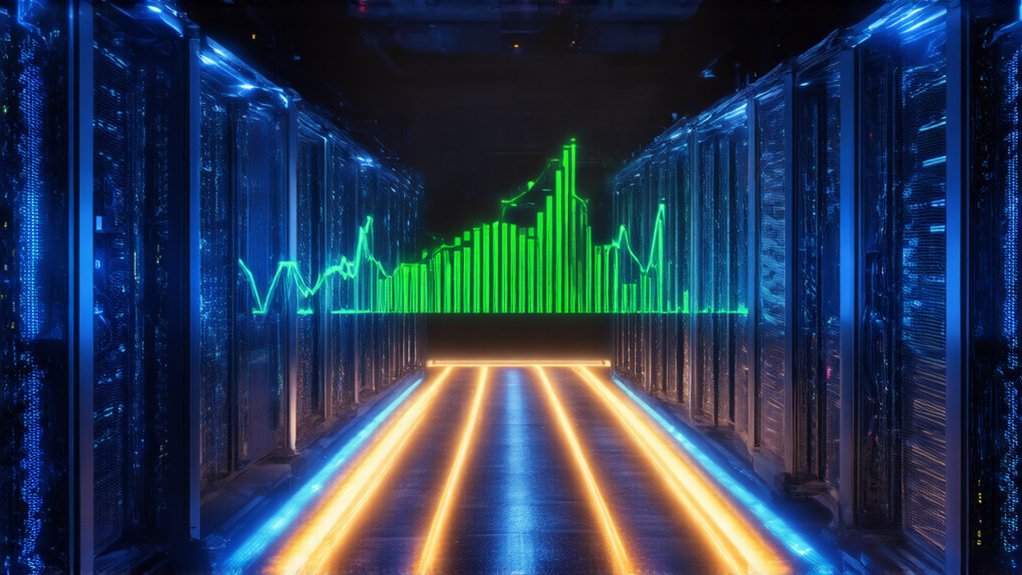The gold rush of the digital age. That’s what the AI market has become, ballooning to a staggering USD 279.22 billion in 2024. Everyone wants a piece of the pie. And why wouldn’t they? Projections show this market exploding to somewhere between USD 1.1 trillion and USD 5.267 trillion by 2030-2035. Not too shabby for a technology that was largely theoretical just decades ago.
The players are exactly who you’d expect. Tech giants like Google, Microsoft, and NVIDIA are battling for supremacy. NVIDIA’s particularly crushing it, holding a ridiculous 92% share of the data center GPU market. Then there’s the specialized crowd—OpenAI, H2O.ai, and others—focused on pushing boundaries rather than quarterly earnings. The professional services firms? They’re right there too, with Accenture and Deloitte leading the AI services charge.
Tech titans wage AI supremacy wars while specialized players push boundaries over profits.
Look closer at what’s actually selling. Software dominates the offerings segment. Machine learning and deep learning are the technologies everyone’s implementing. And who’s buying? Financial services companies are throwing the most cash at AI, while healthcare is racing to catch up as the fastest-growing adopter. Companies are increasingly turning to model distillation techniques to make their AI solutions more efficient and cost-effective.
The trends are clear as day. Generative AI is exploding—expected to hit $200 billion by 2030. The AI software market alone was valued at $98 billion in 2024 with a projected 30% CAGR through 2030. Everyone’s jumping on AI-as-a-Service platforms. Edge AI is gaining traction because nobody likes lag. And large language models? They’re everywhere now.
What’s driving all this growth? Big data, obviously. Can’t train algorithms without massive datasets. Computing power keeps advancing, thankfully. And automation? Every company wants it. Less human work, more machine efficiency. Classic capitalism.
The market’s got hurdles though. Regulation uncertainty. Skills shortages. Security concerns keeping executives awake at night. But money talks. And with the kind of growth numbers being projected, all these challenges suddenly look very solvable.
Welcome to the AI economy. It’s just getting started.
The generative AI sector itself has experienced extraordinary expansion, growing from a mere 191 million dollars in 2022 to over $25.6 billion in 2024.




